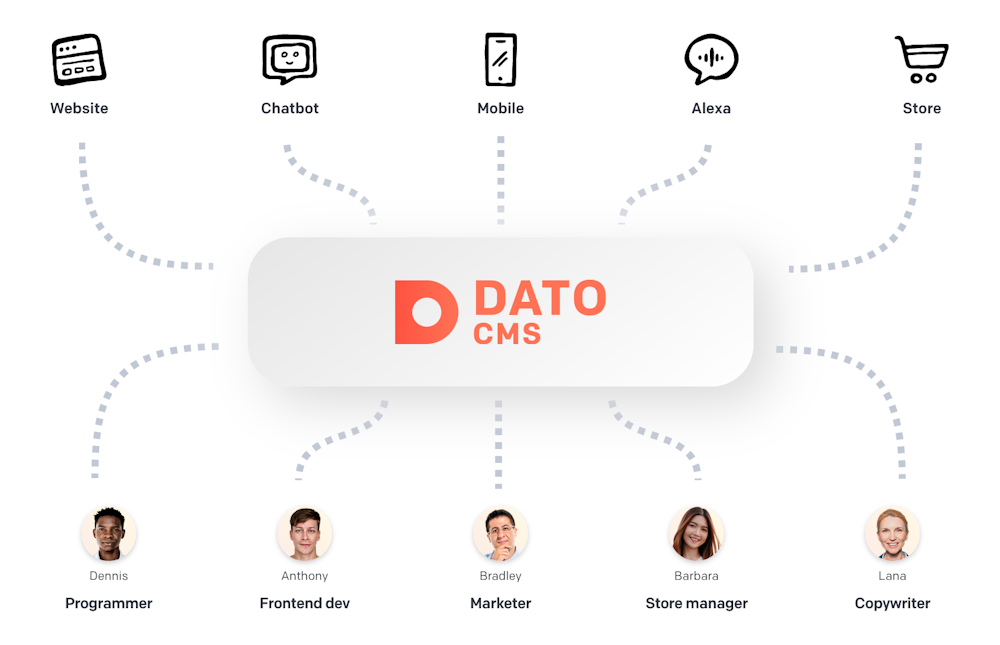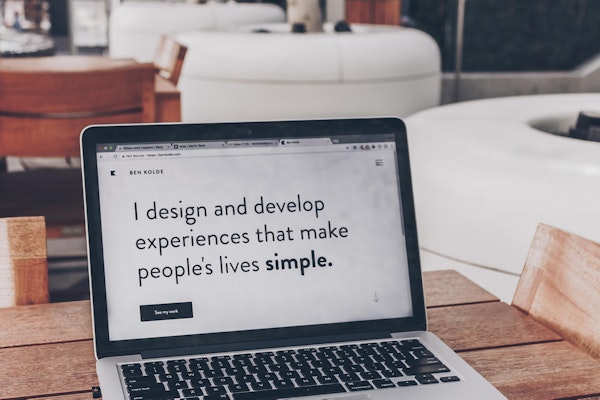Omnichannel CMS
Why You Need an Omnichannel CMS
Implementing an omnichannel strategy has become crucial for your business. So adopting it late or ignoring it may lead to serious consequences. Building an omnichannel architecture means having the content used by all your channels in the same place, and not all CMSs support this. This is why adopting an omnichannel CMS is so important.
Now, let’s understand what omnichannel means and why your customers expect it from you.
What Exactly Does Omnichannel Mean?
The word omnichannel was invented to define a business strategy focused on providing a seamless and effortless customer experience, regardless of the channel of contact. In other words, an omnichannel approach aims to unify your customers’ experience across all the channels you have a presence in.
Initially, omnichannel merely meant making the same content accessible from multiple platforms, social, and devices. But the idea behind the omnichannel approach applied to digital businesses changed when it turned out that customers expect to be able to perform similar actions on different platforms. Basically, the transition between channels should be as smooth as possible for your users.
Such an approach contributes to the creation of a strong and distinctive brand. In fact, this new interpretation of the omnichannel concept encourages you to build user experiences that are not channel-dependent. As a result, omnichannel means designing and crafting channel-consistent experiences for your audience. Thus, your customers or users will be able to perform the same action on the platforms and channels that they prefer.
So, your content and interaction should adapt to your audience, regardless of channel, not the other way around. But let’s delve into why your customers expect such an omnichannel experience.
Why Customers Prefer an Omnichannel Experience
As you just learned, omnichannel is about the digital experience provided to your users and customers. And that has been validated by this study performed by Salesforce, which found out that 80% of customers believe that the experience a company provides is as relevant as its products or services. Moreover, more than 50% of digital shoppers stopped buying from one platform because of a better experience offered by a competitor. Thus, the experience you offer to your customers plays a key role in your revenues.
In the same study also emerged that customers prefer and look for seamless, effortless, and high-quality interactions across channels. This is especially true when it comes to engagement, which should be based on earlier interactions, regardless of the channel. In other words, your customers want their progress, preferences, and recommendations to be independent of the devices they used to interact with your business.
As you can imagine, this is possible only if there is a single source of data and content. Then, your websites, web applications, ecommerce platforms, mobile apps, smartwatch apps, Alexa Skills, IoT interfaces, or anything that can connect to the Internet will retrieve the same content from this source and present it to the end-users accordingly.
So, omnichannel inherently involves content management. But before looking at how to implement an omnichannel approach, let's dive into all the benefits coming from its adoption.
Benefits of an Omnichannel Architecture and an Omnichannel CMS
At least 3 benefits come from an omnichannel approach to content management and an omnichannel CMS. Let’s see them all.
It increases your revenues
As we saw earlier, a customer who can take advantage of an omnichannel experience is a more satisfied customer. And a more satisfied customer is a customer who is more willing to ignore your competitors, buy your products, and spend more money.
It increases the time spent on your platforms
As found out by this study published on the Harvard Business Review blog, omnichannel customers spend 10% more time online compared to single-channel consumers. This means that you have better chances of keeping them on your platforms.
It helps you reach new clients
If you are present on different channels, and they all share the same ideas, content, and interactions, you are more likely to be noticed by many people. Consequently, an omnichannel strategy allows you to reach new customer segments.
So, the omnichannel architecture is not only cool, but also effective. On the other hand, implementing it is undoubtedly challenging, especially when it comes to content management. Fortunately, many tools have been developed to support you during the process.
Now, let’s see how straightforward it is to go omnichannel with a headless CMS solution.
How To Implement an Omnichannel Content Management Strategy
As mentioned early, the key to implementing an omnichannel approach is to keep all your content in the same place. This means that your content should not depend on specific channels, but should be retrieved from the same source. And this is exactly what a headless CMS, such as DatoCMS, is about.
Specifically, headless CMSs separate where the content is designed, created, and stored, from where it is actually presented to the end-user. In detail, a headless CMS makes all your content available through some APIs (Application Programming Interface), which can be called by any platform connected to the Web. This allows you to implement multiple websites based on the same source of content, as we explained in our article on headless CMS multi-site.
In other terms, headless CMSs are inherently omnichannel when it comes to content management. In fact, the content is managed in the same place and then distributed equally to all your channels, which can be represented by websites, blogs, web applications, social media platforms, mobile applications, smartwatch applications, chatbots, and beyond.

With a headless CMS, your marketing team can focus primarily on designing the best campaigns and assets, without worrying about how these will be delivered across all your channels. This also implies that you can retrieve not only stats related to particular channels, but also analyze reactions to your content in general, just as if you had only one channel.
So, all you have to do to build an omnichannel architecture is adopting a headless CMS and start taking advantage of this and all the other benefits coming from using such an approach to content management.
Learn more about how DatoCMS can help you boost your digital marketing presence.
DatoCMS Features to Win the Omnichannel Challenge
DatoCMS offers several features fully supporting an omnichannel architecture.
For example, a super fast worldwide Content Delivery Network, capable of scaling with your company, with no upfront costs. Delivering fast data all over the world allows content creators to focus on writing great content and creating new, innovative digital experiences.
Or DatoCMS best-in-class images API composed by an images CDN that serves lightning-fast images for any digital product, and an image processing suite of tools and APIs built to save both development time and visitor bandwidth. The same seamless service for video is offered by our video API.
Moreover, DatoCMS is the most complete CMS for what concerns data integrity. Each and every content-type can be restricted to allow only specific types of content. Be it a picture of a certain size, a data range, a color, a unique slug or a pre-built value, DatoCMS allows workflow creation that ensures mistakes cannot be made.
Localization is another key concept for a solid omnichannel architecture. You need to provide the same experience to your customers and users, regardless of their language and location. That is where DatoCMS top-notch multi-language features come in handy.
Why You Need an Omnichannel CMS — Conclusion
In this article, we learned what omnichannel means, why it is so important for your business according to several studies performed on customers from all over the world, and which benefits it can introduce to your business. On the other hand, going omnichannel can be a difficult goal to achieve and represent a grueling challenge.
Particularly, we learned how having one single source of content plays a key factor when it comes to implementing an omnichannel strategy. And this reaching this goal might be time-consuming. Luckily, headless CMSs are inherently omnichannel when it comes to content management and can help you go omnichannel quickly and effortlessly. You have to adopt a headless CMS—such as DatoCMS.
Thanks for reading! We hope that you found this article helpful. Feel free to reach out to us on Twitter with any questions, comments, or suggestions.
- What Exactly Does Omnichannel Mean?
- Why Customers Prefer an Omnichannel Experience
- Benefits of an Omnichannel Architecture and an Omnichannel CMS
- How To Implement an Omnichannel Content Management Strategy
- DatoCMS Features to Win the Omnichannel Challenge
- Why You Need an Omnichannel CMS — Conclusion


